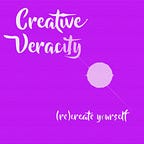Koan Kreativity VII
Using Ancient Wisdom to Inspire Modern Creativity
Presented as either a riddle or tale, the koan is instrumental to the Zen student’s path to enlightenment; by opening and freeing the mind from both outer and inner restrictions, the “empty mind” of the Zen student is more open to insight and realization that could be achieved in no other way.
As artists and creative people we, too, need the benefit of an “empty mind.” Our own creative insights and realizations become more tangible and workable when we clear away the clutter of fear, apathy, negativity, and all other potentially destructive restrictions that we may have learned in our lives.
__________
Incense Burner
A woman of Nagasaki named Kame was one of the few makers of incense burners in Japan. Such a burner is a work of art to be used only in a tearoom before a family shrine.
Kame, whose father before her had been such an artist, was fond of drinking. She also smoked and associated with men most of the time. Whenever she made a little money she gave a feast inviting artists, poets, carpenters, workers, men of many vocations and avocations. In their association she evolved her designs.
Kame was exceedingly slow in creating, but when her work was finished it was always a masterpiece. Her burners were treasured in homes whose womenfolk never drank, smoked, or associated freely with men.
The mayor of Nagasaki once requested Kame to design and incense burner for him. She delayed doing so until almost half a year had passed. At that time the mayor, who had been promoted to office in a distant city, visited her. He urged Kame to begin work on his burner.
At last receiving the inspiration, Kame made the incense burner. After it was completed she placed it upon a table. She looked at it long and carefully. She smoked and drank before it as if it were her own company. All day she observed it.
At last, picking up a hammer, Kame smashed it to bits. She saw it was not the simple creation her mind demanded.
* * *
There’s a story about Ernest Hemingway in which he accepted a bet to write a meaningful story with the fewest words possible (the story may be an urban legend, but the point remains). Hemingway reportedly thought for a moment, then wrote down: “Baby shoes. For sale. Never worn.”
Six simple words. Story intact.
Arthur Quiller-Couch, who gave a series of lectures on the art of writing in the early 1900s, said (while railing against “extraneous ornament”): “If you here require a practical rule of me, I will present you with this — whenever you feel an impulse to perpetrate a piece of exceptionally fine writing, obey it — whole-heartedly — and delete it before sending your manuscript to press. Murder your darlings.”
To “murder your darlings” isn’t about infanticide — it’s about removing our egos from our creative work.
It’s about letting our work speak for itself without having to prove how brilliant we are.
It’s about starting over, if necessary.
It’s about keeping things simple.
